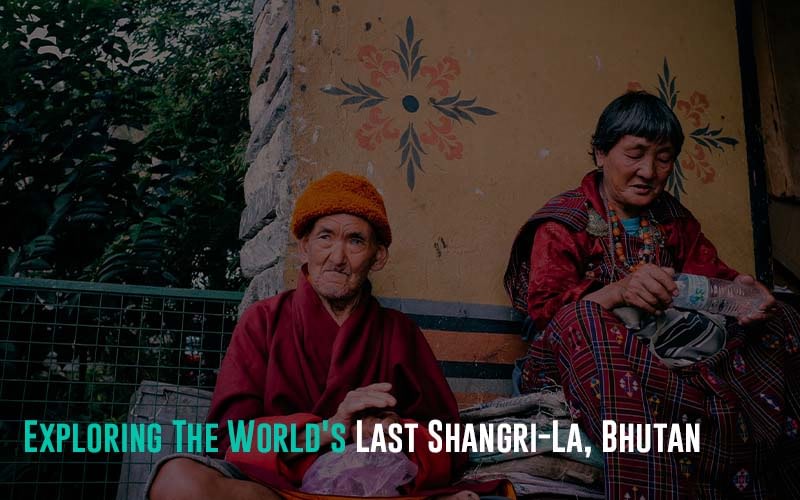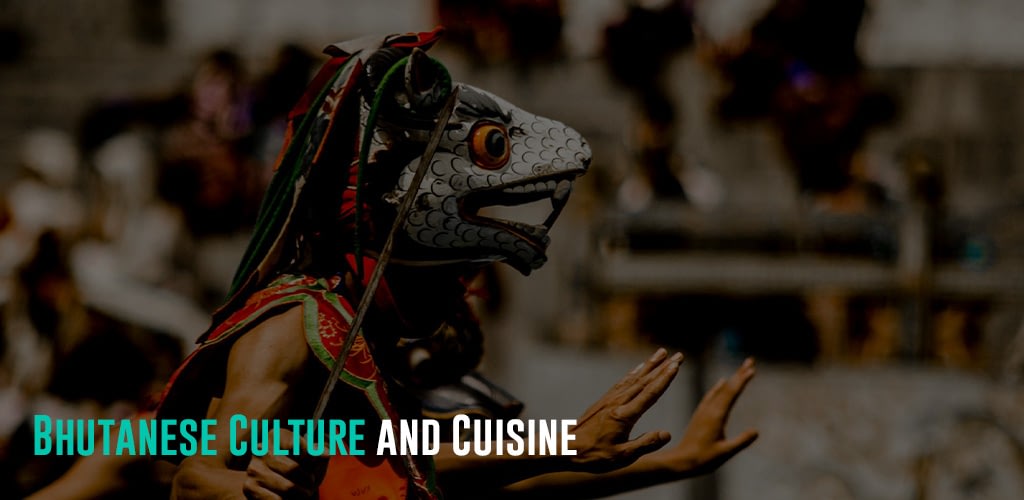Bhutan is a small country tucked away in the Himalayan mountains between India and China. It’s nicknamed the “last Shangri-La” because it has kept its traditional Buddhist culture and unspoiled natural beauty.
Though Bhutan has been an independent kingdom for centuries, it only opened to outside visitors in the 1970s. They are very careful about letting in tourists so that Bhutan doesn’t lose its special character.
In Bhutan, people care more about being happy and living a meaningful life than getting rich. They follow a philosophy of “Gross National Happiness.” This means they focus on things like preserving their culture, environment, and spirituality.
Bhutan has lots of cool places for visitors to explore. You can see ancient monasteries, magnificent mountains and valleys, unique festivals, and try spicy Bhutanese food. The people are very welcoming and happy.
Featured Image Source
Why Go On a Trip to Bhutan?
Bhutan is a truly unique destination that offers experiences you won’t find anywhere else in the world. Here are some of the top reasons to add Bhutan to your travel bucket list:
Buddhist Haven
Bhutan is a profoundly Buddhist country where spirituality permeates daily life. You can witness ancient rituals at monasteries, temples, and festivals. This is the best place to experience Tibetan Buddhism outside of Tibet.
Being a mountainous country, Bhutan has numerous trekking trails. Trails are available with varying difficulties, so even a beginner can go on a hiking trip to enjoy the beauty of Bhutan. The Druk Path Trek in Paro is ideal for a novice hiker. However, if you are up for one of the most challenging hikes in the world, you can try the Snowman Trek in Paro. The Jhomolhari Trek is another hiking trail that offers spectacular views of the surrounding green valleys and meadows. Remember, the Bhutanese consider mountain peaks sacred. So, trekking above 6000 m is illegal here.
Carbon Negative Country
Bhutan takes environmental conservation very seriously. It is one of the few carbon negative countries in the world, meaning it absorbs more carbon than it emits. Most of the country is forested and pristine.
Pursuit of Happiness
Bhutan prioritizes Gross National Happiness over economic factors. You’ll find a peaceful, content vibe throughout the country focused on living meaningfully versus materialism. The Bhutanese are warm, humble, and happy.
High-Quality Tourism
Bhutan carefully manages tourism to minimize negative impacts. Independent travel is not allowed. You must book tours, ensuring responsible travel practices are followed. There are initiatives to support local culture.
Key Destinations in Bhutan
Paro Valley
- The lush Paro Valley is home to Bhutan’s only international airport and serves as the gateway to the country.
- The valley offers spectacular views of Mount Jhomolhari and other peaks of the High Himalayas. Trekking opportunities abound with routes like the Druk Path Trek connecting Paro to the capital Thimphu.
- Paro is also home to historic monuments like the Paro Rinpung Dzong, a 17th century fortress-monastery with a watchtower that offers panoramic valley views.
Thimphu
- The capital city of Thimphu combines a quaint town vibe with lively markets, restaurants, and nightlife.
- Top attractions include the massive Buddha Dordenma statue, Motithang Takin Preserve, home to Bhutan’s national animal, and the National Memorial Chorten with its golden spires.
- Don’t miss Changlimithang Stadium and Archery Ground, where locals practice Bhutan’s national sport of archery.
Punakha
- The former capital, Punakha, lies in a fertile valley fed by the Pho Chhu and Mo Chhu rivers.
- Punakha Dzong, the largest dzong in Bhutan, is situated at the confluence of these rivers and contains sacred relics.
- Nearby Chimi Lhakhang, nicknamed the “Fertility Temple,” draws pilgrims hoping to conceive.
- Punakha’s subtropical climate makes orange and rice cultivation rare in Bhutan’s rugged terrain.
Haa Valley
- The pristine Haa Valley cradles quaint farms and forests perfect for hiking and mountain biking.
- Chele La Pass features panoramic views across the Himalayan peaks and valleys.
- The 7th century Lhakhang Nagpo and Lhakhang Karpo temples house sacred relics.
Top Things to See and Do
Festivals
- Bhutan’s colorful tshechu festivals happen year-round at dzongs and monasteries. Masked dancers perform to honor saints and deities.
- The Paro Tshechu in spring is especially lively, with unfurling Thangka paintings and locals dressed in finery.
- Time your visit during a tshechu for vibrant celebrations and sacred masked dances.
Trekking
- Bhutan offers superb trekking, with trails leading to cliffside monasteries, remote villages, and soaring Himalayan peaks.
- The Druk Path trek between Paro and Thimphu passes lakes, forests, and valley vistas.
- For advanced hikers, the Snowman Trek traverses high passes over 20,000 feet in elevation across the remotest parts of Bhutan.
Rafting
- Whitewater rafting along raging rivers like the Mo Chhu and Pho Chhu offers an adrenaline rush. Camp along the shores at night.
- Beginners can ride the mellower portions while advanced rafters tackle churning rapids rated Class IV and V.
- Book with licensed operators for safety. The prime rafting season is from September to December.
Birdwatching
- Bhutan’s varied ecosystems harbor over 700 species of birds. Keep an eye out for rare black-necked cranes, Himalayan monal pheasants, and rufous-necked hornbills.
- Head to protected areas like Bumdeling Wildlife Sanctuary or riverine valleys early in the morning and dusk when birds are most active.
Bhutanese Culture and Cuisine
Religion
- Bhutan is a deeply Buddhist country with a strong Tibetan influence. Intricate Buddhist imagery and teachings permeate daily life.
- Ancient dzongs (fort-monasteries) and temples contain sacred relics and are hubs of spirituality. Witness monks performing ancient rituals.
- The main forms of Tibetan Buddhism here are Drukpa Kagyu and Nyingma. Experience chanting, meditation, and festivals.
Dress
- Traditional dress is worn daily. Men wear the knee-length gho robe cinched at the waist by a belt called kera.
- Women don the ankle-length wrap-around skirt kira, paired with a blouse called wonju. Outfits are brightly colored and striking.
- It’s respectful for visitors to wear traditional garb when visiting monasteries, dzongs, and other religious sites.
Crafts
- Bhutan prides itself on its arts and crafts like intricate paintings, tapestries, bamboo weaving, and paper making.
- Every valley has its own style of vibrantly painted masks and statues of deities used in religious dances.
- Handwoven textiles and bamboo crafts make excellent souvenirs. Visit markets to find authentic handicrafts.
Cuisine
- Bhutanese cuisine features spicy curries, stir-fries, and stews served over red rice. Chili peppers are used liberally!
- Try ema datshi (chilies and cheese), phaksha paa (pork with radish), and other hearty meat and veggie dishes.
- Yak milk and cheese are common in high altitude areas. Sample traditional snacks like momos (dumplings) and zigyo (fritters).
When to Visit Bhutan
Seasons
- Spring (March–May) and autumn (September–November) are the most pleasant times, with moderate temperatures ideal for hiking and sightseeing.
- Summers can be hot and humid, with heavier monsoon rains. Winters are cold in the mountains.
Festivals
- Timing your visit during a tshechu festival held at various temples and dzongs allows you to experience colorful mask dances, folk music, and temple blessings.
- Major tshechus happen in Paro in April and Thimphu in September/October. Each district has tshechus on different dates.
Permits
- Bhutan limits visitor numbers. Book tours in advance through an approved agent to get permits.
- Peak seasons like spring and fall often sell out quickly. If planning a custom itinerary, reserve 4-6 months ahead.
- Private tours are more expensive but allow flexibility. Pre-scheduled group tours are cheaper.
Budgeting
- Bhutan has a mandatory daily fee of $200–250 per person to cover accommodation, transport, guides, food, and entry fees. Tours booked through agents include this fee.
- Look for off-season specials and group discounts to cut costs. Carry extra for shopping, drinks, tips, and other expenses.
Ideally, visit Bhutan in the spring or fall to maximize the pleasant weather and your chances of catching a lively festival. Book well in advance through a tour company or agent to secure permits and arrangements.
Conclusion
Bhutan offers a truly magical journey like nowhere else on earth. With its deep spirituality, natural grandeur, and warm culture, this tiny Himalayan kingdom delivers profound experiences. Follow these tips to plan your own memorable trip to this last Shangri-La.
For extra help with planning your trip, you can check out our trip planner app, made especially for travel enthusiasts. You can learn more about it here. It has helpful features that save you time when planning your next adventure. If you want to be wise in your travels, learn more about how the Trip Planner works. Or just start using it now to plan your next fun trip! The Travel-Wise tools help you make your dream trip happen.








